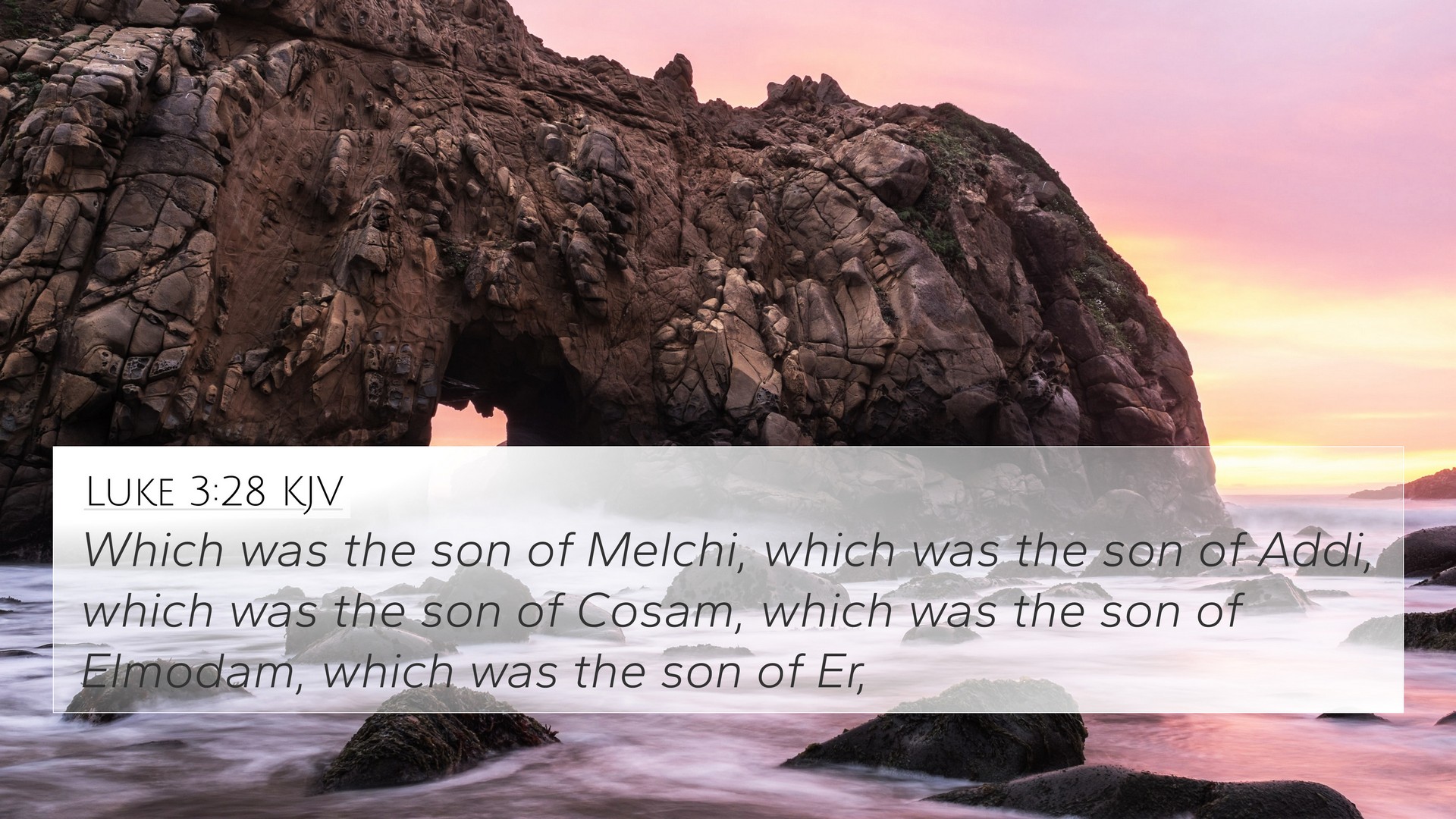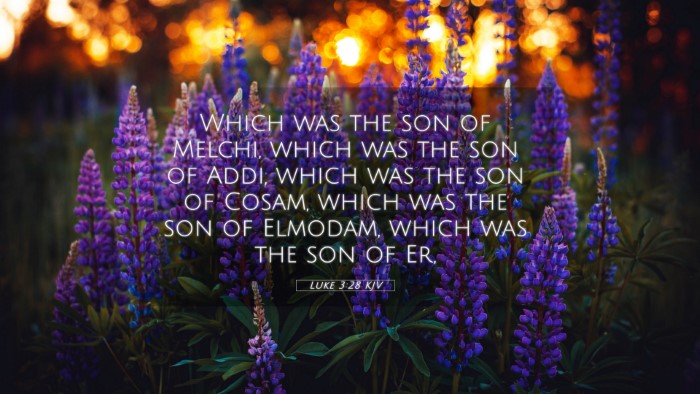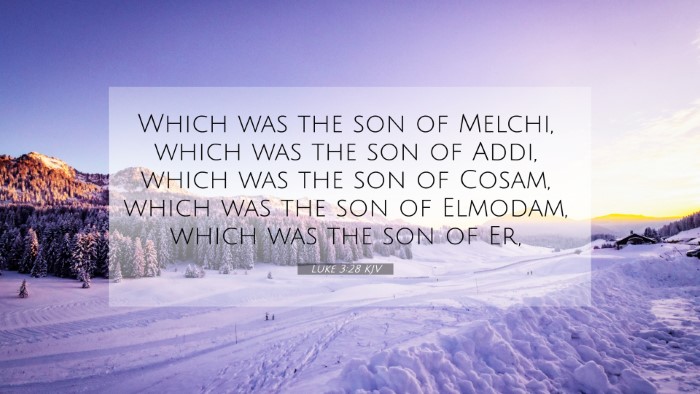Bible Verse Meaning: Luke 3:28
Luke 3:28 states, "The son of Enos, the son of Seth, the son of Adam, the son of God." This verse appears in a genealogy that aims to establish the lineage of Jesus Christ. Commentaries provide significant insights into its meaning and implications.
Summary of Insights from Public Domain Commentaries
- Matthew Henry: Henry emphasizes the importance of genealogy in establishing the humanity of Christ. He notes that the mention of Adam connects Jesus to all of humanity, showcasing His role as the Redeemer of mankind. The structure of the genealogy indicates a divine unfolding of God's plan through human history.
- Albert Barnes: Barnes discusses the significance of tracing Christ's lineage back to Adam. He highlights that this establishes Jesus as the Messiah and fulfills prophecies regarding His coming. By linking Jesus to Adam, the text showcases the continuity of God's covenant with humanity.
- Adam Clarke: Clarke points out that the name “son of God” affirms Jesus’ divine nature while also acknowledging His kinship to Adam. He discusses the theological implications of this lineage and the understanding of Jesus as the new Adam, symbolizing a new creation.
Thematic Connections Between Bible Verses
This verse presents fascinating connections across the scriptures, emphasizing themes such as redemption, covenant, and humanity's relationship with God. Here are cross-references related to Luke 3:28:
- Genesis 1:26-27: God created man in His image, establishing the foundation of humanity, which connects back to Adam.
- Romans 5:12: Explores the entrance of sin through one man, Adam, while contrasting it with Jesus, the one who brings redemption.
- 1 Corinthians 15:22: States that in Adam all die; also in Christ shall all be made alive, highlighting the duality of Adam and Christ.
- Luke 19:10: Jesus came to seek and to save the lost, tying back to the need for redemption through the line of Adam.
- Philippians 2:7-8: Discusses Jesus taking on the form of a servant and being made in the likeness of men, connecting His humanity with Adam.
- Hebrews 2:14: Affirms that Jesus shares in humanity to destroy the power of death and sin, linking back to the origin in Adam.
- 1 John 3:8: States the reason the Son of God appeared was to destroy the works of the devil, linking His mission back to the fall of Adam.
Connections and Interpretative Analysis
The passage and its cross-references illuminate the profound connections between the Old and New Testaments, serving as a rich foundation for thematic Bible verse connections. Each of these references supports an overarching narrative of redemption and divine intervention in human history:
- Inter-Biblical Dialogue: The genealogy serves as a bridge connecting Jesus to the story of humanity, reminding readers of God's faithful covenants throughout time.
- Linking Bible Scriptures: The mention of Adam invites readers to explore the consequences of sin and the hope found in Christ's redemptive work.
- Thematic Bible Verse Connections: The unity of Scriptures emphasizes God’s overarching plan for salvation, a thread seen from Genesis to Revelation.
- Bible Verse Parallels: By paralleling Adam and Christ, the narrative invites a deeper understanding of humanity’s need for saving grace.
Tools for Bible Cross-Referencing
In studying cross-references, various tools can enhance understanding:
- Bible Concordance: A useful resource for locating verses and their connections.
- Bible Cross-Reference Guide: Identifies related verses and themes across the scriptures.
- Cross-Reference Bible Study: Methods encourage exploring connections systematically.
- Bible Reference Resources: These materials can provide context and deeper insights into scriptures.
Understanding the Implications of Luke 3:28
Ultimately, Luke 3:28 serves as a reminder of Jesus Christ's divine nature while reinforcing His human lineage. The genealogy is more than a list; it is a testament to God's faithfulness throughout generations. By studying these connections, believers can gain a fuller understanding of the Bible’s cohesive narrative:
- Identifying Connections: By comparing passages, readers can uncover deeper theological meanings and practical applications.
- Comparative Bible Verse Analysis: This analysis can reveal how themes of sin and redemption thread throughout both Testaments.
- Details and Cross-References for Sermon Preparation: Understanding these links can enrich preaching and teaching, offering congregations a fuller understanding of God’s Word.
Conclusion: Luke 3:28 not only serves as a genealogical note but also as a profound statement of theological truth that bridges the beginnings of humanity with the promise of salvation. Through thoughtful study and cross-referencing, believers can fully appreciate the depth of God's plan as revealed through scripture.


